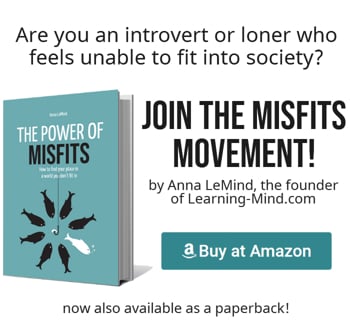As it seems, child neglect causes irreparable damage to the brain.
To a layperson, there is one big difference between the two brains in the image above, and that is size. Without knowing who they belong to we might surmise that they are of different ages, and that accounts for the discrepancy in volume.
But would you be shocked if I told you the brains belonged to two three-year-old children?
So why is one brain much larger than the other?
The extraordinary reason one is bigger is that one child was loved by its parents whereas the other was neglected. The brain on the left belongs to a child whose mother was fully responsive towards her baby and cherished the baby as it grew up.
The brain on the right demonstrates the effects of child neglect on brain development.
Nurture vs. Nature
This astonishing size difference is clear evidence that a child who is nurtured and loved by its parents will develop a larger and more fully developed brain. The child who was neglected by its parents has a more shrunken brain that is shrivelled in places and contains more dark and fuzzy areas.
So what does this mean for the neglected child growing into adulthood?
Researchers believe that it will be virtually impossible for the child with the smaller brain to develop into a fully-functioning, well-adjusted adult.
This is because some of the key areas in the brain necessary for processing functions such as empathy, intelligent thought, and rational thinking are lacking. It is more likely that this individual will develop addictions, turn to crime, become unemployed, and lack social skills.
This is the first time researchers have seen evidence that nurturing in a child’s early development has actual causal effects on brain size in infants.
The mother-child relationship
The mother-child relationship is already known to be an important stage in a child’s development. John Bowlby first coined the term ‘attachment theory’, which posited that infants are predisposed to form attachments with a primary caregiver.
This theory recognised that child neglect from a caregiver can cause severe developmental problems into adulthood. However, brain size has never been considered an issue, until now.
Professor Allan Schore, of UCLA, one of the researchers involved in collecting and interpreting the data, states that the growth of brain cells is a “consequence of an infant’s interaction with the main caregiver [usually the mother]”.
The growth of the baby’s brain “literally requires positive interaction between mother and infant. The development of cerebral circuits depends on it.”
This is an important point, because, according to Prof. Schore, there is a two-year window of opportunity for the genes of certain brain functions to develop.
If during a baby’s first two years, it does not receive positive interactions with a primary caregiver, then these genes may not ever develop. The child neglect will result in the baby being severely damaged for life, as these abnormalities cannot be reversed.
Implications for adulthood
This discovery may give us a clue as to why child neglect tends to persist in certain families. This cycle of deprivation, wherein the mother herself has been neglected in her early developmental stages, then goes on to repeat this same pattern is explained by these findings.
The child faces the very same disadvantages, the lack of educational qualifications, which leads on to poor if any employment. These early disadvantages can lead to crime, poverty, and even addiction.
These factors are rife in families where the primary caregivers themselves have been victims of child neglect. These primary caregivers do not have fully developed brains and therefore cannot break this cycle, once they go on to have children.
The cycle of recidivism
Another way this cycle is persistent is where rehabilitation programmes tend to fail again and again. Recidivist criminals that the police term as ‘revolving door offenders’ where offenders commit crimes over and over again are notoriously difficult to stop.
Chris Grayling, the UK’s Justice Secretary, said:
…people don’t end up in prison generally speaking for a first offence. Normally the people who end up in our prisons have offended again and again.
Despite the many and varied types of rehabilitation programmes available, none appear to be effective. But if criminals who have come from neglected backgrounds are falling into the criminal system, there will not be a suitable treatment for them. They simply won’t be capable of adhering to any form of programme.
Many experts within prison institutions now believe that the only way to break this cycle of recidivism is to tackle the problem early on. To identify caregivers who are showing signs of neglect to their children and educate them as to how to bring their children up, to allow their brains to properly develop.
Early Intervention
This policy is called ‘Early Intervention’ and has already been trailed in the US for over 15 years. Mothers that are considered ‘at risk’ are visited once a week by a nurse who trains them on looking after their baby.
The resulting data has been impressive. For the mothers that had the visits, there were 50% fewer arrests, 80% fewer convictions, and a much lower rate of drug abuse.
In the UK however, it appears that funding may not be available for such programmes to take place. Despite the cross-party agreement, the UK government is cutting funding to local mental health groups.
Many MPs from both major parties agree that early invention can save money to the taxpayer in the long-term, but the short-term expenditure needed will not see benefits for around 15 years.
It is thought that this is why nothing is being put forward at the moment. But it is not just about expenditure. Any government that implements the early invention strategy will see the rewards garnered by their successive governments.
Graham Allen, Labour MP for Nottingham North, has championed early invention programmes since 2008.
I hope that isn’t true,” says he says. “Because if it is, it would mean we are politically incapable of implementing the one policy that will certainly make our society immeasurably better. And what more profound condemnation of our political system could there be than that?
References:





I do not agree that this is irrepairable. It actually is very repairable although it takes time perhaps there are ways to repair such as I have done so in my own life as well as help many others to do so.
I am living evidence that I am still on tbe planet.. Creating a platform for recovery of abuse, anxiety, depression etc. I was brought up in Institutional life from 6 months on and off untill I reached 16.
Even though there was neglect, and a pretty poor upbringing, i have worked through many barriers, fears, abandonment issues, on a vibrational level. Which means deleting old childhood wounds that constantly would trigger me. You have to do the work and go within.
I won’t lie, it’s one of the most painful experiences, healing is not fluff and bubbles, but if you choose Life instead of Inner torment it’s not rocket science.
We all work on a energy level. Maybe another time and another place to share about vibrational wounds. But I will say.. Not all what toy hear is real. So for all those peole that had similiar pathways to me, do not let other people’s opinions and tests scare you…
There is bigger things happening on planet earth that they have not updated as yet. We are in new frequencies. So new life..
Thanks for listening.
Suze